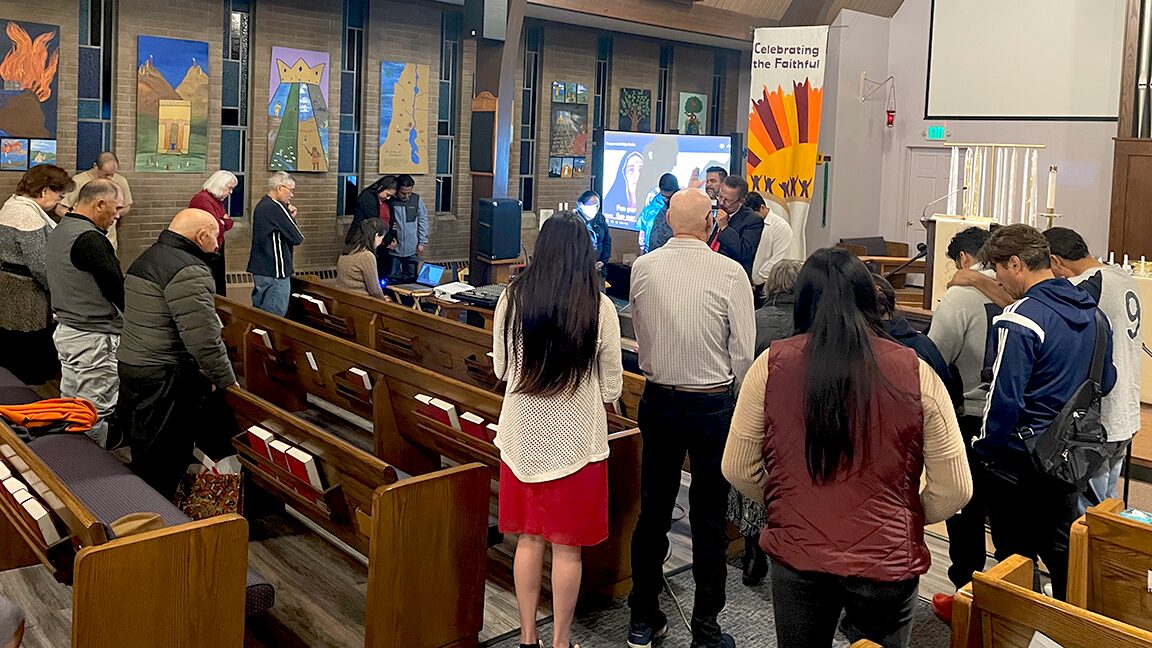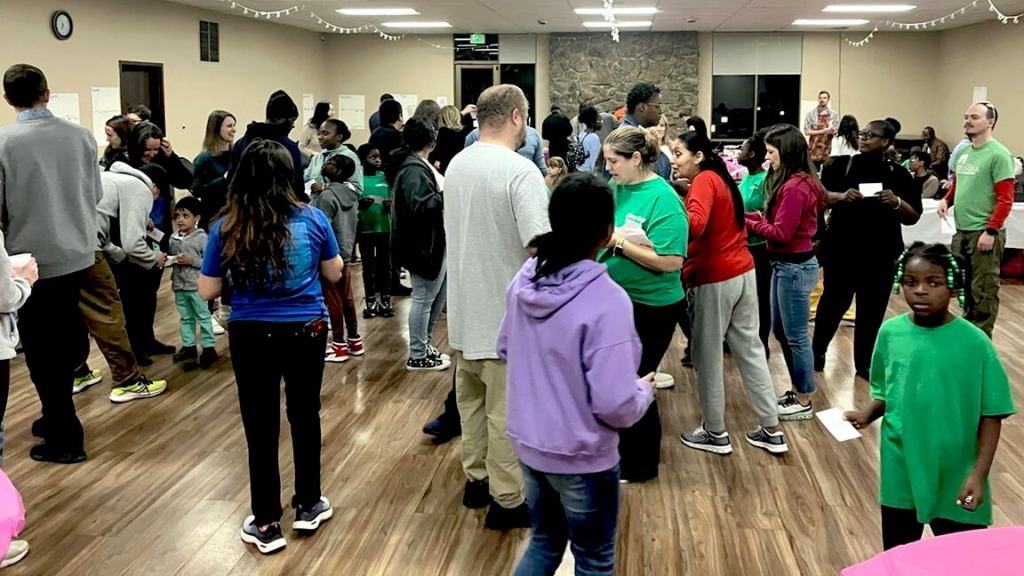When first asked the question: “How do you define the Adventist Worldview?”, I completely misunderstood the question. It was sort of like a goldfish being asked: “How do you define the bowl in which you swim?” I missed the point. Lesson learned.
It helped to expand the question a bit with more detail. How do those of us who were raised within the Seventh-day Adventist Church approach life—and how may we influence culture by who we are—physically, through values, philosophy, attitudes, ethics, our understanding of the “end of time,” and whether life and the world makes sense?
How I understand the question now comes down to examining the specifically Seventh-day Adventist milieu in which we operate. When we understand this, we can translate it into language that our world at large can hear, and we can spread the message in a way that will be much less mysterious to the world at large.
With that clarification, my mind immediately turned to our understanding of the Great Controversy. The Great Controversy, in fact, is our uniquely-Adventist theodicy, which our church developed through the early Advent movement, and most importantly through Ellen G. White and her writings.
Our theodicy posits that God allowed sin to take root in our world so that the Universe at large is able to see the true danger that flows from complete rebellion against God’s plan for healthy and fruitful living. As I see it, this is the way in which we as Adventists make sense of the chaos and complexity of our world. This means, as I see it, the way we live our whole lives, seek God’s will, and interact with the larger world around us all flow from our understanding of the Great Controversy. We use our Adventist theodicy to shape how we live our lives both as Christians and as humans.
But what is a theodicy?
Throughout history, humans who are monotheists have grappled with the question: “why does a perfectly good, almighty, and all-knowing God permit evil?” The traditional term for this struggle is theodicy.1 The article from Encyclopedia Brittanica has a lot of very interesting information.
In traditional Western Christian thought, there are essentially two main schools of theodicy: Augustinian and Irenaean. My quick and severely simplified summary of the Brittanica article cited above is that Augustinian theodicy posits generally that evil is a direct result of the sin of Adam and Eve, and we live in a world rendered evil through that Fall and must negotiate this set of obstacles to get us back to God. By contrast, Irenaean theodicy posits that God has placed us in this complex world in part so that we can grow into the creatures God always intended us to be, and the evils we confront are challenges that assist us in growing closer to God. (The Britannica article cited in Footnote 1 presents a more detailed version of the overall history of theodicy in Christianity.)
Our Great Controversy theodicy leads us to see spiritual, mental, and physical health as all being a part of God’s holistic plan for us as His creations. This holistic theodicy influences virtually all of the ways our Seventh-day Adventist Christianity influences the rest of the world. The rest of this article meditates on two specific examples of how the Great Controversy worldview shapes how we interact with ourselves and with the larger world.
First, I meditate on how our holistic understanding of the Great Controversy has subsequently developed into a distinctly Adventist way to synthesize spiritual and physical health—the synthesis that we as Adventists call the “Health Message.” In my general interactions with those outside the Seventh-day Adventist Church, our commitment to holistic, healthy living is one of the primary ways the larger world understands us as Seventh-day Adventists.
One concrete example (as we have developed it within our Great Controversy theodicy) of how the holistic synthesis of spiritual and physical health has affected our larger world is a small mountain named “Mount Sanitas” near Boulder, Colorado. Today, many Boulderites think this was a Spanish name. In reality, however, it was named by English speaking individuals, and it referred specifically to the Boulder Sanitarium founded in 1879 at the mountain’s base. The Sanitarium opened a couple years after the University of Colorado also opened in Boulder. The Sanitarium opened in Boulder because Mrs. White and John Harvey Kellogg agreed that holistic Great Controversy theodicy called for health institutions like the Sanitarium.
In many ways, the Boulder Sanitarium was one of the first institutions which helped shape the character of Boulder as a fitness and health obsessed location. What started with the Sanitarium has continued up to the present day, even if the present proponents of fitness in Boulder don’t always know where the stream of health awareness started. In summary, our Great Controversy worldview and its holistic view of spiritual, mental, and physical health was one of the influences that shaped Boulder’s historic and continuing reputation for integrating physical and spiritual health.
Second, I turn to how our holistic Great Controversy theodicy helped re-awaken in me individually the importance of the Sabbath as a sign of living in harmony with God’s principles of spiritual, mental, and physical health. When I was younger, I used to view the Fourth Commandment as something of a buzzkill.
Remember the Sabbath day and keep it holy. For six days you shall labour and do all your work. But the seventh day is a sabbath to the Lord your God; you shall not do any work—you, your son, or your daughter, your male or female slave, your livestock, or the alien resident in your towns. For in six days the Lord made heaven and earth, the sea, and all that is in them, but rested the seventh day; therefore, the Lord blessed the sabbath day and consecrated it (Exodus 20:8-11).2
In the Seventh-day Adventist Great Controversy theodicy, the view defying this commandment a quintessential mark of rebellion against God in our world. As a teenager, part of me resented having to show my loyalty by worshiping on Sabbath. I didn’t necessarily see the point.
When I went to law school, however, I began to see the real blessings inherent in both the Great Controversy worldview and Sabbath keeping. When in law school, I intentionally followed the Fourth Commandment, I found that rest on the Sabbath not only kept me in harmony with God’s will, but also refreshed and renewed me for my following week. It wasn’t simply following a commandment—it was also blessing me with the time needed to renew and refresh my mind and heart for a new week. It wasn’t just a negative to be done to avoid wrath; rather it was a net positive to help me grow in mind and body, and in favor with God and humans. The Sabbath enhanced my own holistic health.
In summary, keeping the Sabbath actually made me a better and more rounded human being, and this gave me new appreciation for following our Seventh-day Adventist Great Controversy worldview. From my own experience, therefore, the holistic theodicy found in the Great Controversy worldview reinforces the idea of what true holistic health entails.
In summary, both of these examples are (in a sense) ruthlessly practical examples about how the Seventh-day Adventist Christian Great Controversy theodicy allows all of us to have an impact on our society. Because the idea of the Great Controversy helps inform the way we live and interact with our neighbors, we can show a better way of living as daughters and sons of God. We can exhibit a synthesis of spiritual, mental, and physical health in a way so that people outside the Seventh-day Adventist bubble are able to see practical examples of Christians living holistic health lives.
Leading lives where, in God’s power, we are creating a holistic synthesis of spiritual, mental, and physical health, gives us an incredibly powerful tool that we can share with our hurried unbalanced world. We are translating our Great Controversy theodicy worldview into something that attracts others to join us in holistic living in harmony with God’s plan.
Shawn P. Nowlan, Esq., is an attorney currently working for the federal government in Denver, Colorado. He is a member of the Boulder Adventist Church. Email him at: [email protected]
1 Sherry, Patrick. (Accessed 6 February 2024.). “Theodicy”. Encyclopedia Britannica. https://www.britannica.com/topic/theodicy-theology
2 New Revised Standard Version Bible: Anglicized Edition, copyright © 1989, 1995 National Council of the Churches of Christ in the United States of America. Used by permission. All rights reserved worldwide. http://nrsvbibles.org









